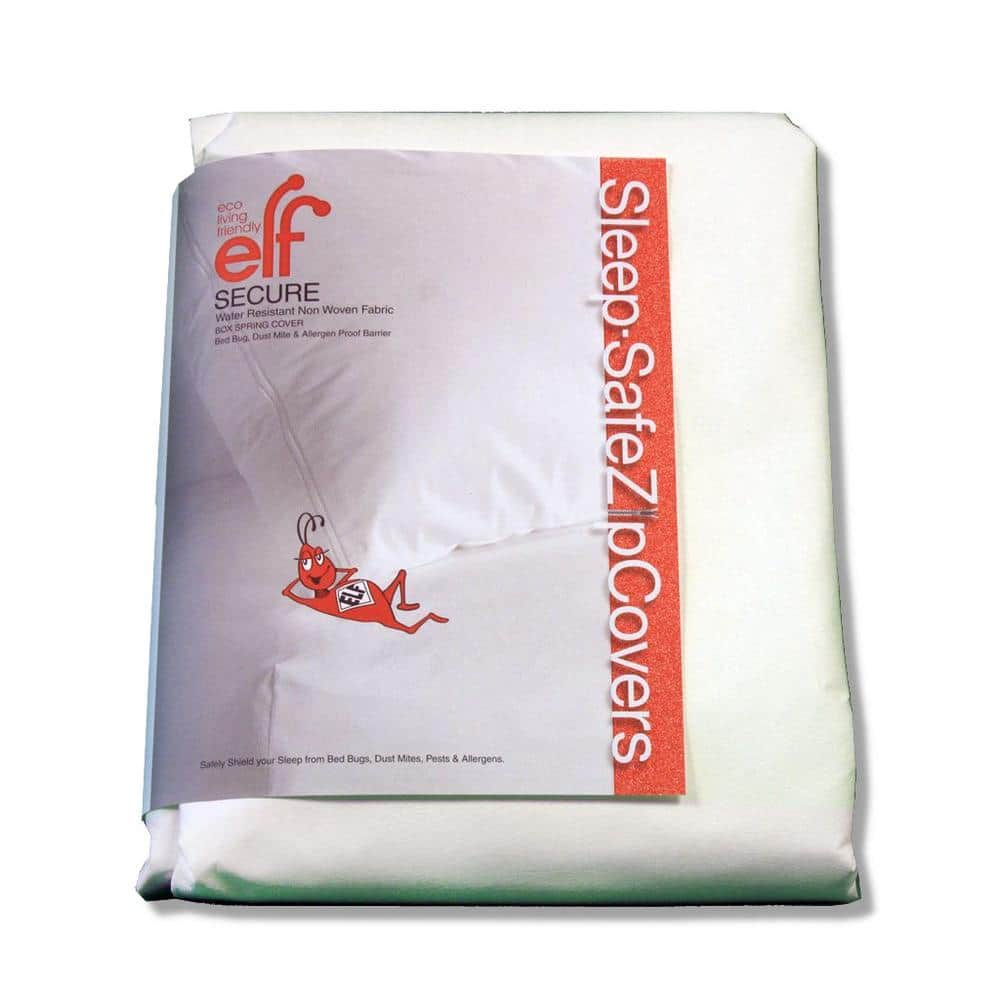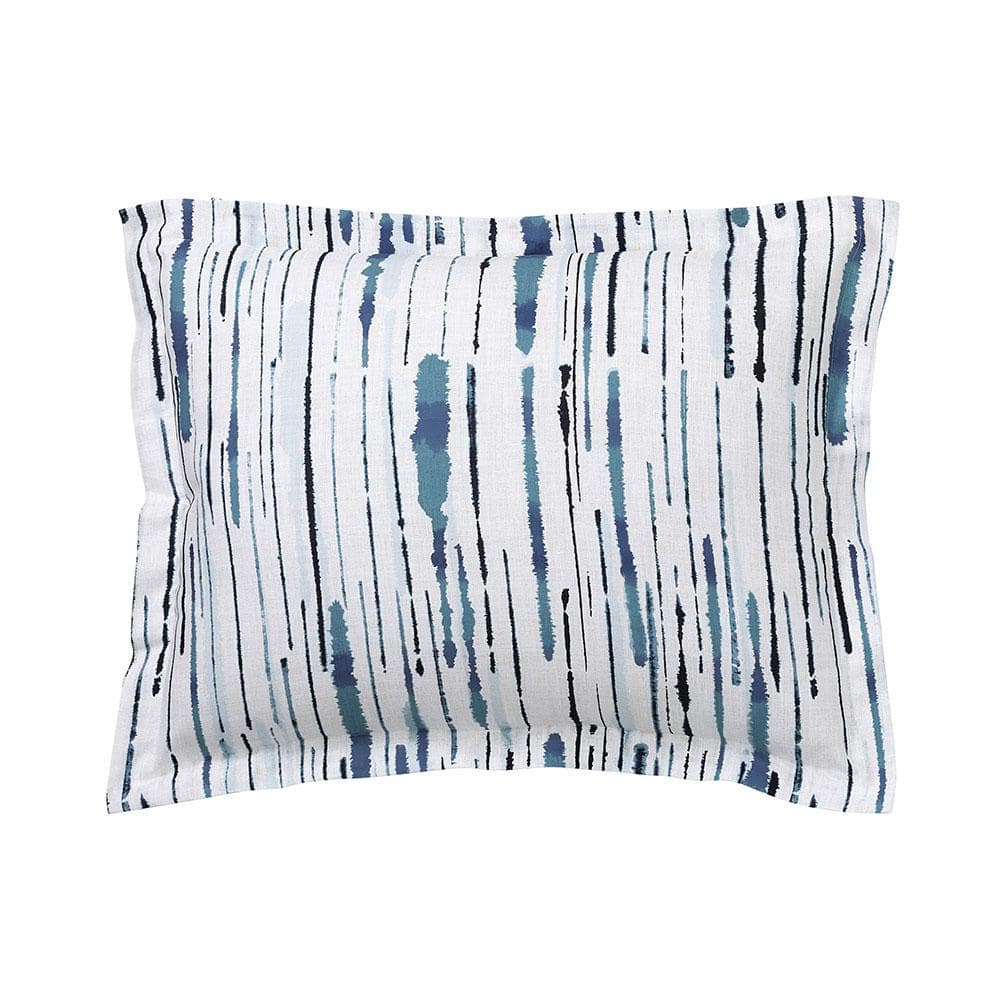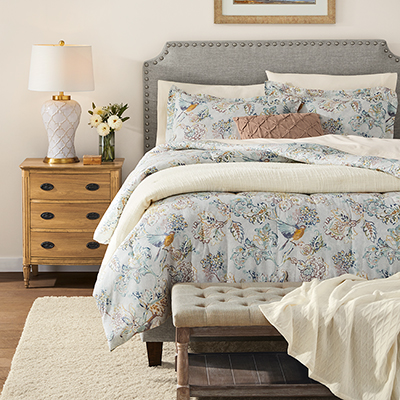How to Lighten Bedding Layers for Warm Weather
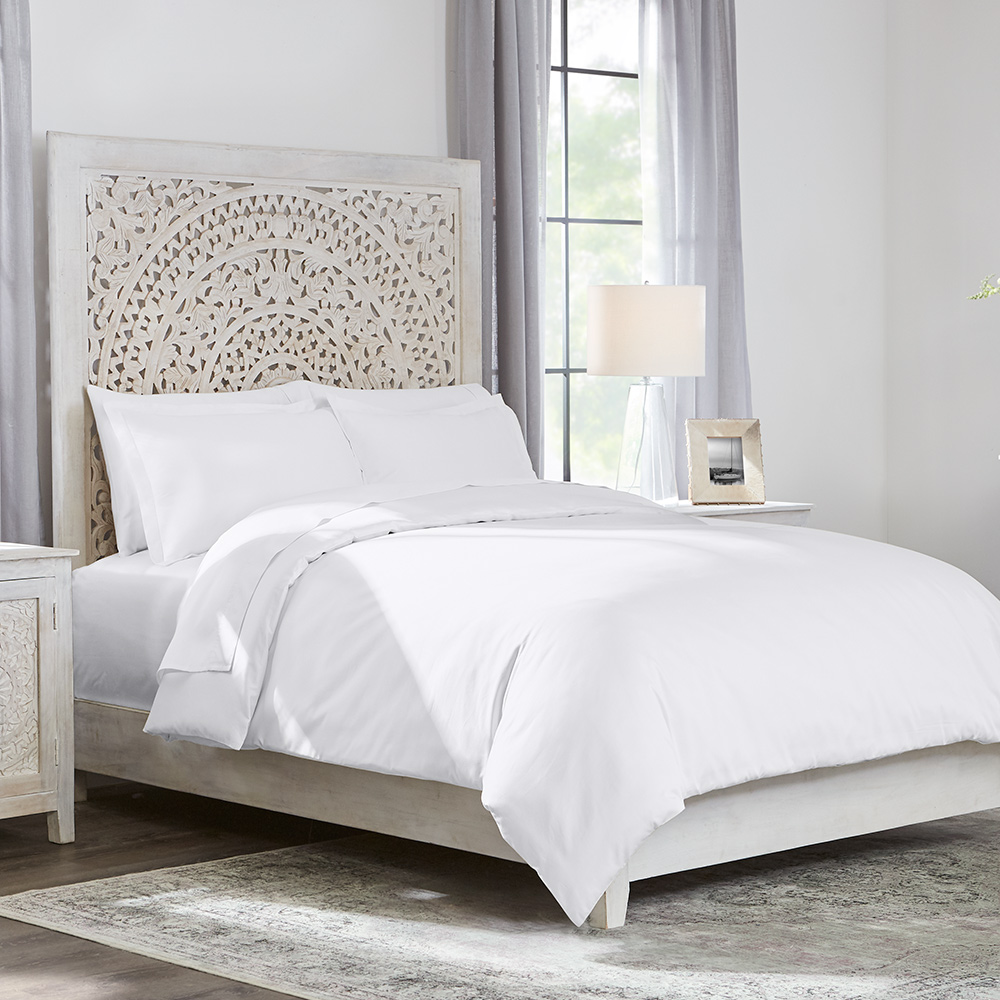
Last updated September 7, 2023
When winter gives way to spring, lighten up the layers on your bed to ease into a new season. Check out this guide for advice on how to dress your bed in lighter layers, summerweight fabrics and cooling bedding so you can get your rest in warm weather.
Table of Contents
Pack Away Winter Bedding
Mattress Cover
Change Up the Mattress Topper
Less Comforter, More Comfort
Throw On a Quilt
Cover Up With a Coverlet
Pack Away Winter Bedding

When the weather begins to warm up, winter bedding should be taken off the bed and put away. Heavy blankets, flannel sheets and thick comforters will make sleeping less comfortable as the temperature climbs.
Launder the linens according to their fabric needs, then dry them thouroughly then store them for the season in a breatheable storage bag. Include moth repellent to protect the fabric from insect damage.
Mattress Cover
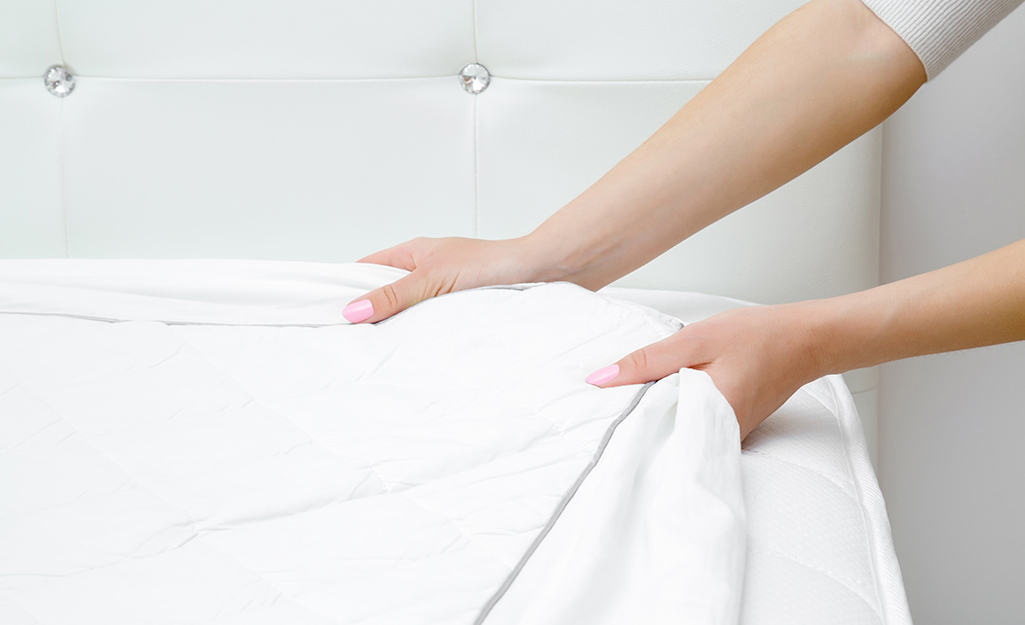
Many people use a mattress cover year-round for protection. If your mattress has a cover, it should be laundered seasonally. Replace it with a new one once it becomes stained or shows wear.
Change Up the Mattress Topper
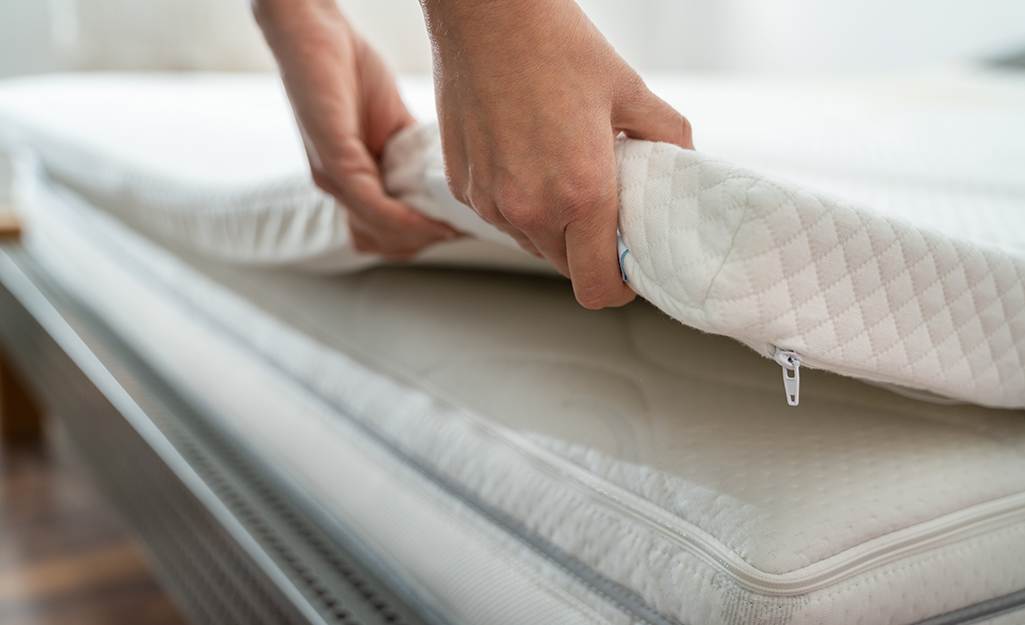
Mattress toppers are a popular add-on to help cushion a mattress and reduce motion transfer. A cooling mattress topper works well in warm climates to make sure the bed doesn't become too warm. Regulating the temperature this way helps with falling and staying asleep.
Less Comforter, More Comfort
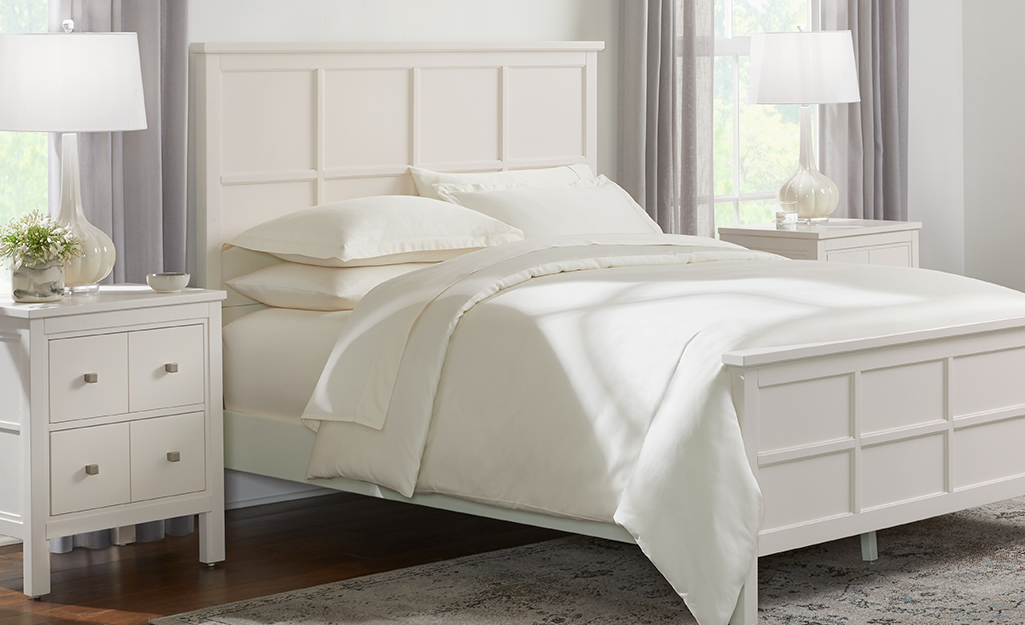
A comforter can be too thick and heavy a layer for the bed in warm weather. Instead, exchange a heavy winter comforter for a lighter one made for spring weather. At the same time, you can also opt for a change in duvet covers to something thinner, with a more breathable weave.
Throw On a Quilt
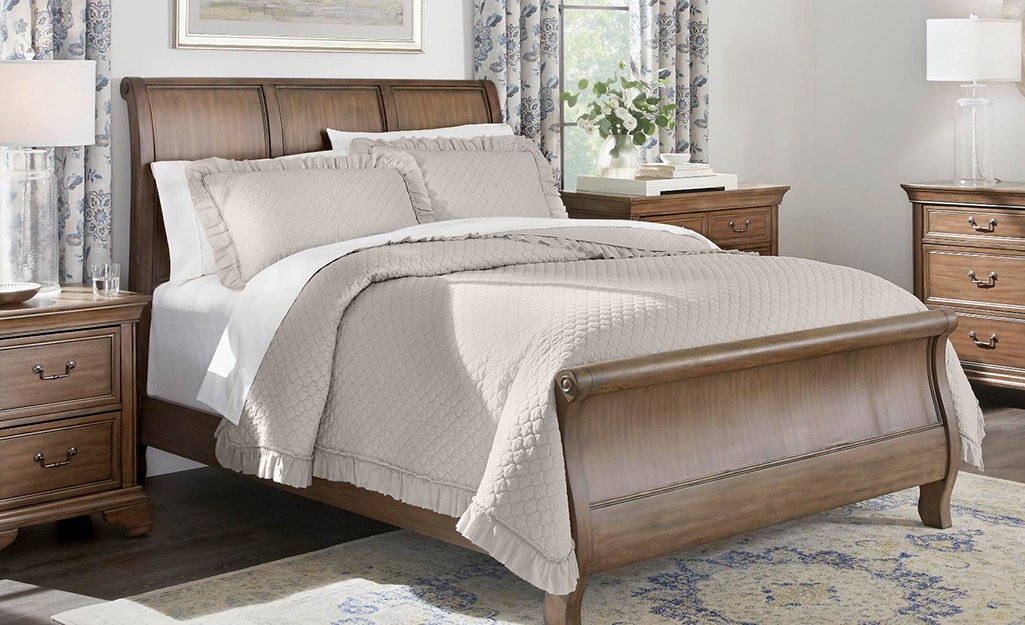
A light cotton quilt is a great warm weather alternative to a comforter. It will hold in less heat, while still providing some cover.
Cover Up With a Coverlet
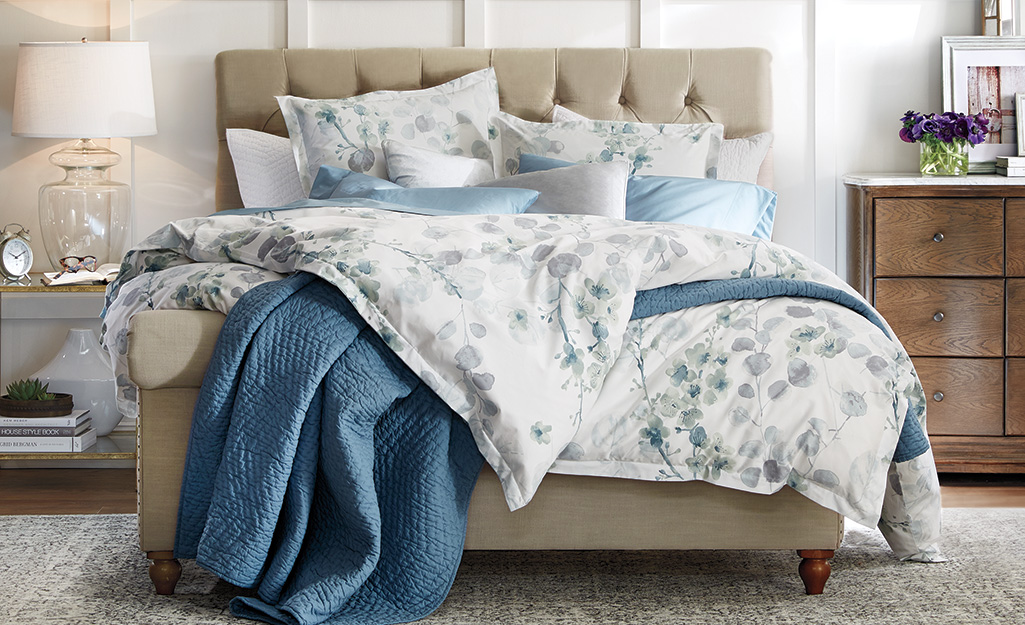
Opt for a coverlet as the weather warms up rather than a traditional bedspread. The old-fashioned spread was used to cover the bed entirely and draped all the way to the floor so that none of the lower parts of the bed were exposed. Modern bed dressing tends to forgo this rule in favor of the shorter coverlet. This is both a matter of fashion and practicality in manufacturing. Since today’s mattresses are available in a wide range of thicknesses, bedspread size would be hard to standardize. This helped cement the popularity of the coverlet and comforter which typically only need cover the top one-third to two-thirds of the bed height.
Make Friends With Matelassé
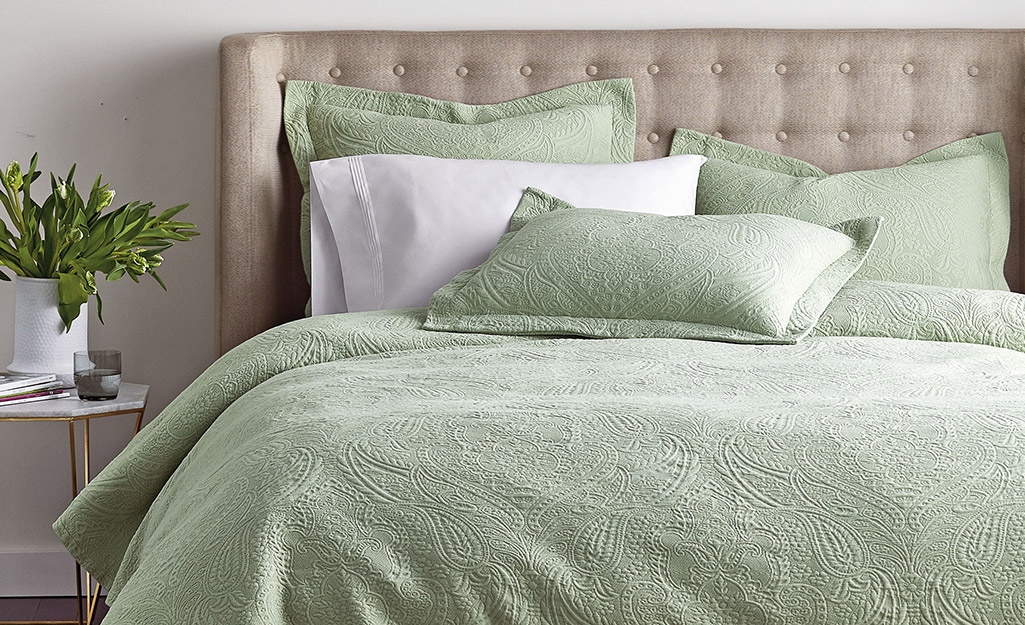
Matelassé (mat-lah-zay) fabric is a single-ply patterned weave material, usually cotton and thicker than a sheet but more lightweight than the average bedspread. It is traditionally used as a bed covering in warmer climates providing textured look as you might expect of a bedspread or quilt, but without the weight so sleeper remains cooler.
The fabric must be cleaned with care to prevent shrink (typically around 5 percent). This can be prevented with professional cleaning. The coverlet can also be machine washed in cool water on the most gentle cycle and air-dried.
Change the Sheets
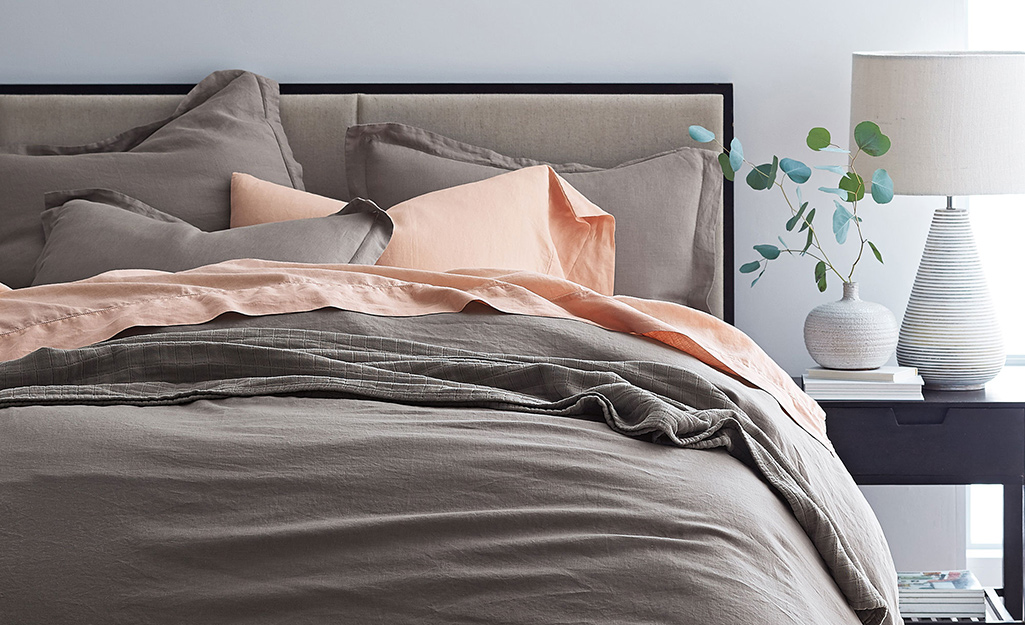
Replace winter sheets with lighter ones in natural fabrics like cotton, linen or bamboo. Linen is highly prized for warm-weather sheets because of its moisture-wicking capabilities, along with it being very breathable and great at regulating temperature. Cotton is a good prospect as well, and both fabrics gets softer over time as they are washed. However, linen is the more durable material.
Choose percale weave in any natural material when it is available. Percale is lightweight, yet crisp and feels cooler to the touch. It also is visually pleasing as it drapes well on a bed. Using light colors and bright whites in sheets and bedding also make the room feel more airy and spring-like.
Prepare for the warmer weather to come by getting comfortable with lighter bedding. Shop our website, and The Home Depot delivers online orders when and where you need them.


